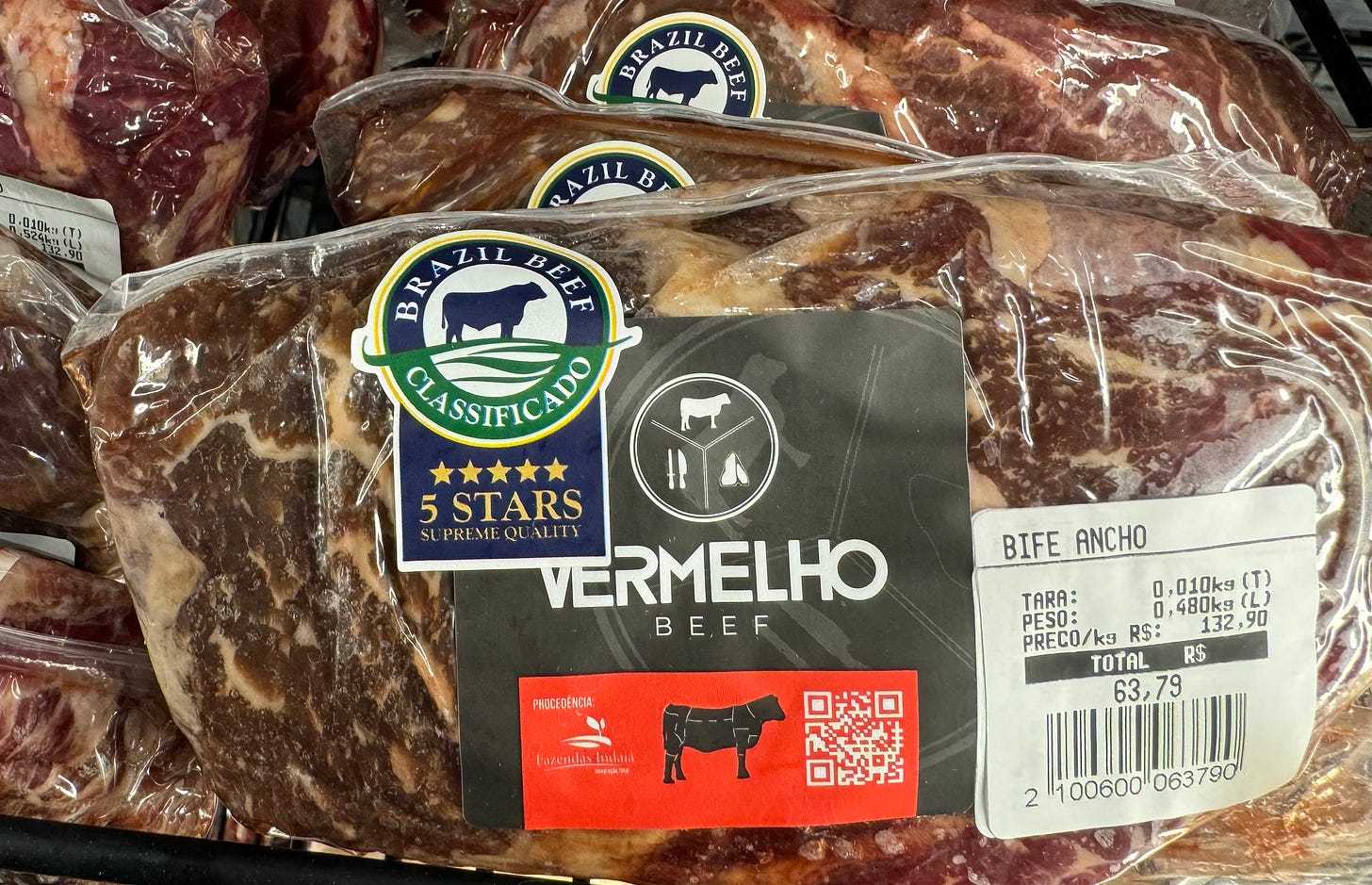The anthropology of meat.
Prime Future 226: the newsletter for innovators in livestock, meat, and dairy
On the first day of my first semester of college, I was late to Spanish class after getting lost on campus. I finally found the right place, walked in, and sat down as the professor was describing all that we would learn over the semester about Ancient Egypt.
Oh no. I was, in fact, still lost.
This was Egyptian Hieroglyphics, not Spanish. 🤦🏻♀️
Fast forward to earlier this year when I met the owner of an iconic churrascaria in Campo Grande, Brazil. His father started the business 30 years ago with the aspiration of serving the highest quality beef in Brazil to his customers. The problem was that with no quality grading system, beef was just beef — the epitome of a commodity.
In search of a higher standard, the enterprising restaurateur found a large cattle producer who would produce to his specs (for a premium) and a processor who would cut the carcass as he wanted.
The final step would be to create his own grading system which would align all of their incentives with the ultimate goal of serving customers the best beef in Brazil, every time.

This story bumfuzzled my American sensibilities. I mean, even my non-ag friends may not know the difference between a bull and a steer, but they know the terms Prime and Choice.
It doesn't take much digging into the history of the US meat industry to realize that the USDA beef quality grading system plays a large part in US beef quality.
The same story is playing out for Australia with their MSA quality grading system, as we discussed last week: “Not shockingly, clarity in and alignment of incentives leads to better beef.”
After meeting that churrascaria owner, I wondered how long it would be until Brazil adopted a national quality grading scheme. Any modern meat industry would want/need to keep up with the leading beef quality grading systems worldwide, right?
And if that’s true, what is the best meat quality grading system in the world?
As I dug in, I quickly learned this was actually a terrible, horrible, no good, very bad question.
Let's take a jaunt around the global beef industry to see why. (And why that Egyptian Hieroglyphics misadventure is relevant.)



